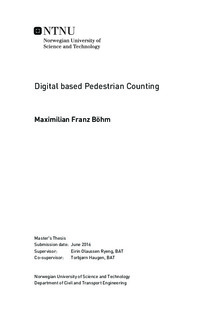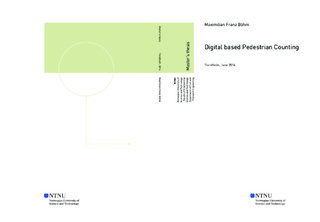| dc.description.abstract | The possibility of detecting MAC addresses of Bluetooth and Wi-Fi devices, motivated transport researchers throughout the last years, to use this data for several applications in transport engineering. Especially the estimation of travel times for the motorized transport, by using these data sets showed promising results. The increasing usage of mobile devices, equipped with Bluetooth and Wi-Fi interfaces throughout the last years, creates new possibilities in using the mentioned sensors also for pedestrian data collection. This study is about to examine the usage of Wi-Fi and Bluetooth sensors for pedestrian counting, especially in urban areas.
A literature review has been conducted, to get a better understanding about the technical background of the system. Scientific studies, dealing with the usage of Bluetooth and Wi-Fi sensors for traffic detecting and counting were studied to get an overview about the current state of the art in this area of transport engineering. As a next step the sensor equipment was about to be tested in urban surroundings. The gained knowledge from the literature analysis was used, to set up open field tests. Besides these test runs, parallel manual counts were done to different times of the day and during peak and non-peak hours, to investigate the coverage of the generated data compared to the manual counts. To evaluate the data sets, detected by the sensors, a data processing methodology was developed and used for the further data evaluation.
The results indicated especially the suitability of the Wi-Fi Sensors, for following the structure of the comparatively done manual counts. Due to the suboptimal hardware settings of the used sensors, the generated data sets could not be used for distinguishing between the observed modes of travel. Further recommendations were given, how a speed based distinguishing between different modes of travel can be implemented by using Bluetooth and Wi-Fi sensors.
As a last part of the work, the processed data sets were used to estimate the manual counted pedestrian volumes out of the sensors produced data. | |

